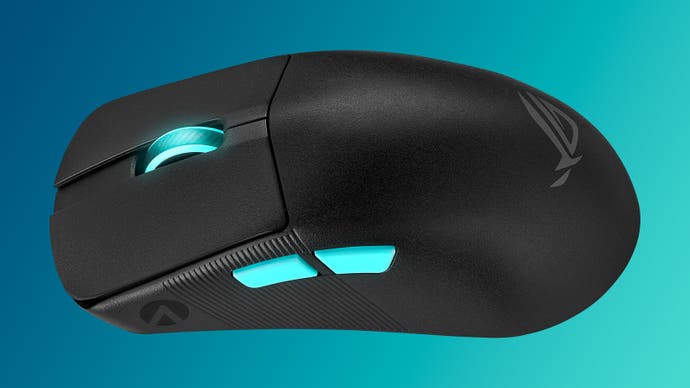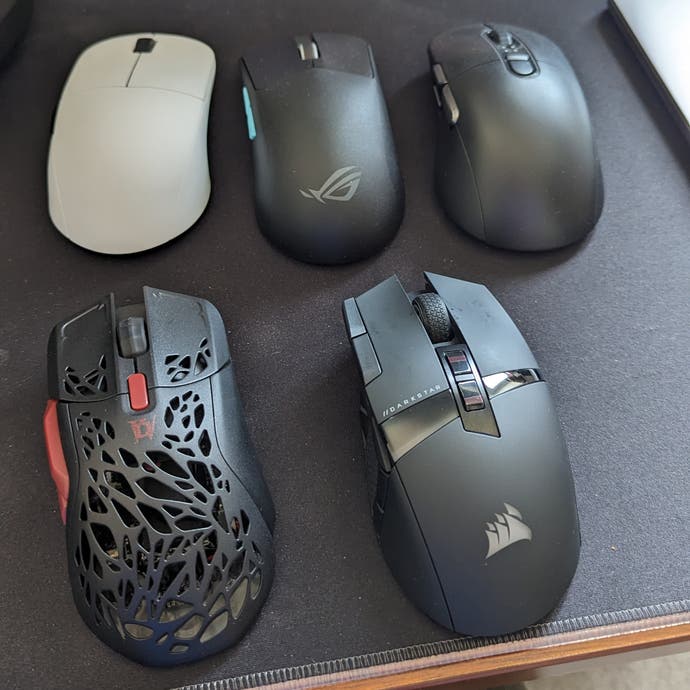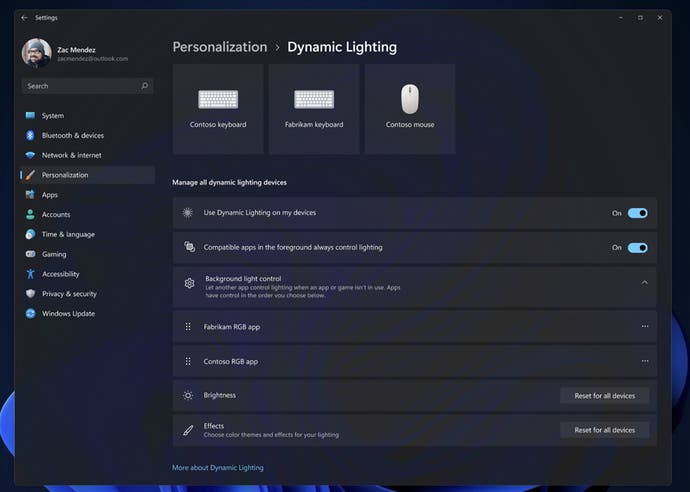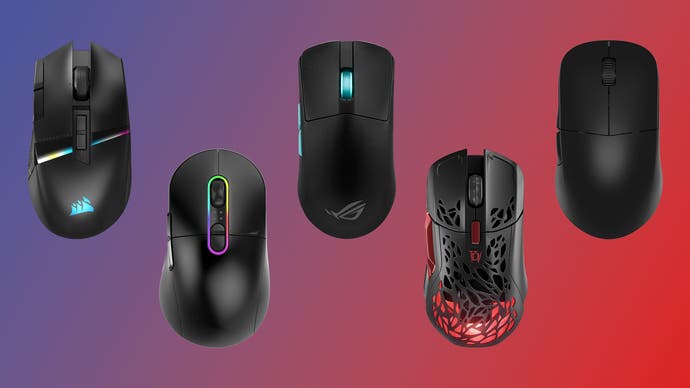Modular designs, MMO specials and ultra-lights for FPS: 2023 mouse trends
Five gaming mice reviewed from SteelSeries, Mountain, Asus, Corsair and Endgame Gear.
What's moving and shaking in the mouse world of 2023? To find out, we've rounded up five of the best mice we've tested over the past few months, from modular designs and MMO/MOBA specials to ultra-light options for competitive gaming.
If you've seen our recent round-up of 2023 keyboard trends, this is very much in the same vein: five mini reviews of recently released gaming mice, from big-name brands like Corsair, SteelSeries and Asus to more boutique options like Mountain and Endgame Gear.
We've also leaned in further to that theme of gaming mice trends for this year, with a write-up of the most interesting mouse trends as epitomised by these five mice - and the others that we've tested at Digital Foundry HQ in 2023 so far.
Endgame Gear XM2we

The £80/$90 Endgame Gear XM2we is my platonic ideal of a competition-focused gaming mouse - lightweight, wireless, comfortable, reliable. Its clean and streamlined (unventilated) design suits a wide range of hand types and grip styles, but more importantly it felt immediately natural to use. A 63g design and good adhesion on the glossy side grips allow for rapid readjustment, which is crucial for flicking around in Counter-Strike, but the quality of the primary and side buttons, scroll wheel and build quality didn't let me down in regular use either.
There's a flexible USB-C cable in the box for recharging - which you'll need to use as few third-party USB-C cables fit the recessed port - but for the bulk of my testing I used the low-latency wireless, which I didn't need to think about until an LED of the side of the mouse started flashing to let me know its 50 hours of battery life were almost up. Inside, there's a reliable PixArt 3370 optical sensor but no place to stash the 2.4GHz dongle, while the base of the mouse features big PTFE skates to help it glide. There's no Bluetooth here, which is acceptable for what feels like an FPS-focused design.
The reason this article has taken so long to come to fruition is basically that I didn't want to stop using this mouse - I just accepted it as my daily driver and really had to struggle to remember that I hadn't always had it and I actually needed to write something about it. I'm normally super-keen to return to my go-to Razer Viper, so the XM2we displacing that long-time favourite is a big vote of confidence in my book.
Mountain Makalu Max

The (initially €90 and now) €70/$90 Makalu Max is one of the most promising mice on this list, as Mountain take the same modular approach with mice as they did with their DF-recommended Everest Max keyboard. The idea here is similar to what we've seen from the likes of Razer Naga and the classic Mad Catz R.A.T. mouse, with a choice of four magnetically-attached side panels and optional weights to allow you to set up your mouse just how you like it in terms of shape and balance. You can even create your own 3D-printed side grips.
That used to be a popular formula, but at a 110g minimum weight, I feel it's just too heavy to be used for fast-paced genres, especially with relatively slick edges that make it hard to pick up and reposition. With a maximum of eight buttons, it also falls behind many MMO and MOBA-focused mice in the button count war, while the omission of Bluetooth makes it less flexible than many of its competitors.
However, the well-respected Pixart PAW3370 optical sensor, clicky Kailh GM 8.0 switches, reliable 2.4GHz wireless connectivity and a comfortable shape - especially with both included wings installed - do make it at least worth trying at its recently reduced price, especially for MMOs and other genres that emphasise long-term comfort and button count over flick speed and control. There are other niceties too, such as a ring of RGB lighting around the scroll wheel and top buttons, a respectable 80 hours of battery (if those lights are disabled) and a flexible USB-C cable that worked well on the previous wired ultra-light Makalu design. Mountain's Base Camp software is also a strength compared to boutique competitors, with a polished design and good functionality, although the likes of Razer and Corsair have more powerful packages.
The Makalu Max is worth trying after its €20 price reduction then, which positions it better against MMO/MOBA-focused competitors like the Logitech G502, Glorious Model I and Razer Basilisk.
SteelSeries Aerox 5 Wireless: Diablo 4 Edition

This write-up is brief as we've already recommended the Aerox 5 Wireless amongst the best ultra-light gaming mice, but this £125/$150 Diablo 4 special edition is a beautiful reimagining of a winning design. The new theme really works, with a kind of natural/demonic/body-horror vibe with a charred dark grey base colour and faded blood red accents. This looks even spookier with the red backlighting pulsing within the heart of the mouse, although the red/black colour scheme means that other shades from the RGB rainbow look less suitable than on the standard black version.
Otherwise, the mouse works just as well as always, with its low weight, comfortable design and bullet-proof wireless ensuring the Aerox 5 is a great fit for fast-paced games, from Diablo to Counter-Strike 2. The USB-C dongle also deserves special mention, as it allows for easy use on a MacBook, Steam Deck or similar while a USB-A adapter and flexible USB cable permits connection to the more numerous full-size USB ports of a standard PC or convenient wired use. Overall, a solid mouse that I really dig - even if the standard version is the better value.
Asus ROG Harpe Ace Aim Lab Edition

The £130/$170 Asus Harpe Ace operates on similar lines to the Endgame Gear XM2we above, yet costs nearly double the price. For that, you get an even lighter 54g design that somehow packs in Bluetooth and a more advanced PixArt 3399 sensor in a very similar size. There's even a place to stash the USB dongle, making the Harpe Ace a better choice for use on the go - if you can risk misplacing a mouse of this cost!
I'm a big fan of the Harpe Ace's looks too, with a matte black finish, light blue side buttons, a subtle ROG logo on the back shell, and optional RGB lighting in the scroll wheel. I'd say it looks cooler than the XM2we, with a fractionally narrower but longer body too.
However, it's hard to imagine that the Ace is worth that extra £50 unless you're a true ultra-light enthusiast - I'd go for the XM2we if it's available at a similar price difference in your region.
Thanks to MechKeys.com for providing the Asus ROG Harpe Ace Aim Lab Edition sample, which came with some cool Chinese text - would definitely recommend them for getting Chinese boutique mice without the hassle for going through AliExpress.
Corsair Darkstar Wireless RGB

Our final mouse is the £150/$170 Corsair Darkstar Wireless RGB. This one wraps up a lot of current trends into a single package - it's a lightweight MMO/MOBA mouse with 2.4GHz wireless and Bluetooth and 15 programmable buttons. There are also unusual gyro controls that allow you to map tilting the mouse to in-game actions, plus rare 2000Hz polling (over wireless!) and an incredible lighting implementation that sees RGB emit from the front, back, side and a bar along top.
That heavy feature list does result in a rather limited 20 hours of battery life with RGB enabled, but this extends to 65 hours with it disabled - so you'll have to weigh looks versus functionality really. Thankfully, recharges are rapid over USB-C, almost any third-party cable can be used in the non-recessed port and the wireless adapter can be stashed in the underside of the mouse, details other mouse vendors would do well to adopt (hi Endgame Gear). Another point in favour of going full RGB is Corsair's iCUE software, which is the most powerful on the market and allows for a ton of customisation, effects and synchronisation.
With a weight of 96g, the Darkstar works better than Razer's Basilisk V3 Pro (11g) or Logitech's G5202 X Plus (106g) in faster-paced games that require rapid mouse repositioning, and the Darkstar is also the best bet on this list for larger hands - though MMO mice as a category tend to be generously proportioned.
I wouldn't recommend picking up this mouse at its current price, but at around the $100 mark it could be a great fit for folks that need a ton of buttons - whether they're MMO fans or macro enthusiasts. Perhaps we'll see a model without gyro controls for a lower price down the line too?
Gaming mouse trends for 2023

So looking at our five options, what are the throughlines? It's clear that utra-light mice remain the fastest-growing category, as more gamers realise the benefits of an extremely mobile mouse that's easy to reposition in a flash, but we can look deeper too.
First, the nature of these lighter mice are evolving away from the holey/honeycomb designs of most early ultralights, with Asus and Endgame Gear amongst others achieving low kerb weights while maintaining a full unventilated shell - instead, the weight savings are found internally, and usually in ways that don't result in squishy, flexible mice either. A lot of people seem to have a strong negative reaction to a mouse with holes in, on the grounds of durability, style, hygiene or trypophobia, so this seems like a sane choice as lightweight options become firmly mainstream.
Another interesting development is how well-established wireless mice are in competitive circles, from genuine esports athletes to folks trying to reach the upper reaches of the CS:GO ladder. Previously, wireless mice were regarded with suspicion over their latency and reliability, but now the majority of professional gamers use wireless mice from a range of brands, even including whole teams - and that's reflected in the huge number of wireless options these days, especially in the lightweight category. That trust in wireless is certainly backed up by my testing, as even smaller brands are able to achieve good results with off-the-shelf components these days.
Next up, I think it's clear that modular mice remain niche products, with even the sanely-designed Makalu Max not quite making the case for modularity being the chief selling point of a mouse given its high price and relatively meagre performance. Instead, I suspect we will see more companies design mice with more subtle modular elements - eg top shells that are designed to be removable so that enthusiasts can add 3D-printed replacements (a la the Xtrfy M42), side trigger buttons that can be replaced or rotated to adjust their size and position (a la the Glorious Model I and Logitech G502 X Plus) or switches that can be easily accessed and swapped (a la the Asus ROG Gladius 3). Mainstream users can completely ignore those features, instead choosing these mice for their core attributes, while modularity enthusiasts get at least some latitude for customisation.

Finally, RGB lighting continues to evolve. I really like what Corsair are doing in this space, with the Cyberpunk-inspired lights on the Darkstar RGB, but the irregular shapes of the Diablo edition Aerox 5 Wireless also take its more ordinary built-in lighting to the next level, giving it a kind of creepy/organic vibe. Even the RGB ring around the Mountain Makalu Max is interesting, as it's more visible than the side or in-body lighting we typically see on gaming designs. There's room here for continued development and more radical designs, but I'm most cheered by news that Windows 11 will soon include cross-brand RGB lighting controls - as it could allow me to finally have a perfectly synchronised setup.
With this in mind then, 2023's ultimate gaming mouse ought to be a lightweight design without holes, with interesting RGB lighting, modular components and a wireless connection... and in fact, I've already begun testing just such a mouse. Stay tuned for that review!
Have you spotted any gaming mice trends I didn't touch on here? Is there anything you'd like to know about the mice I've tested? Let me know in the comments.

